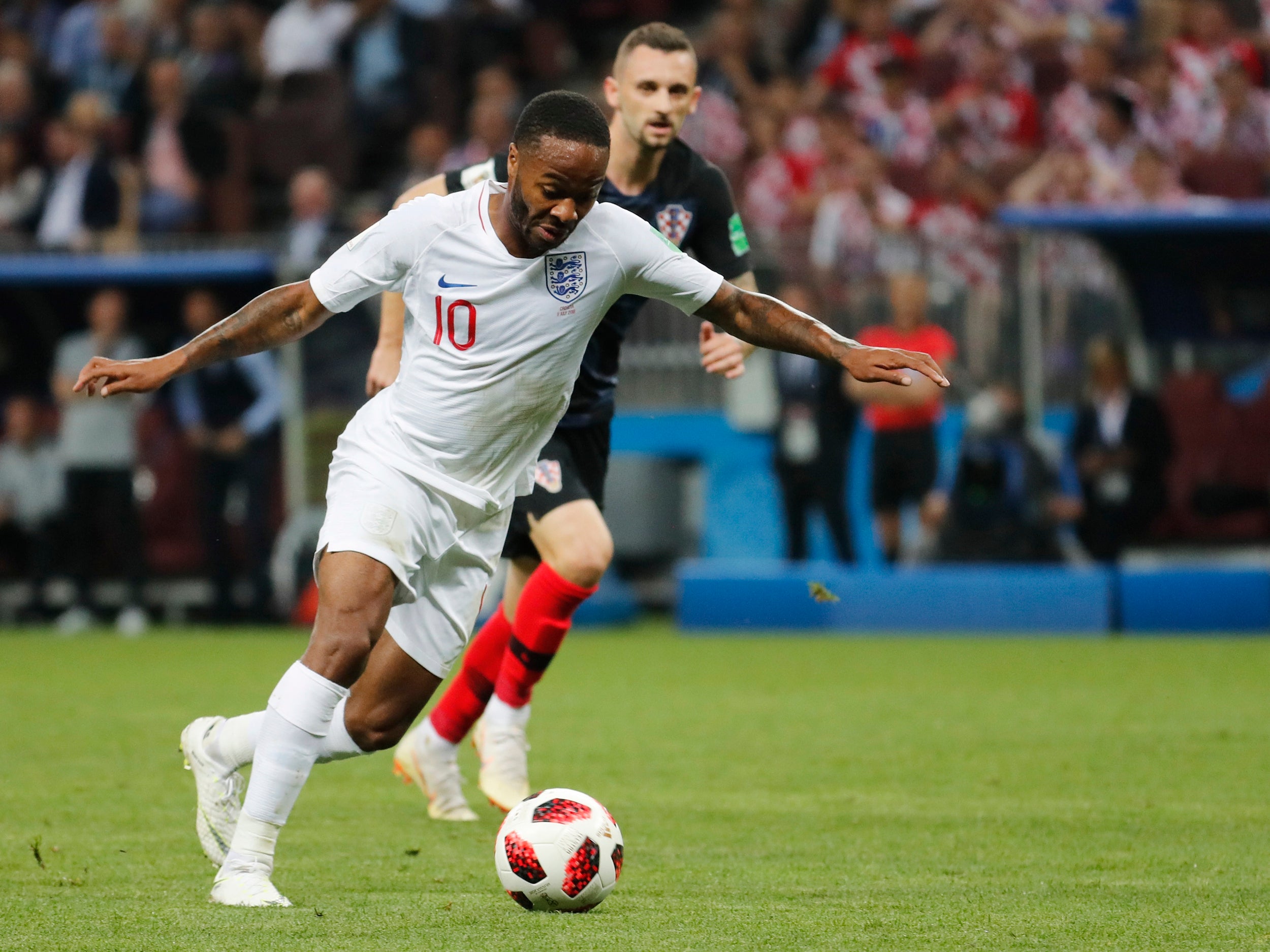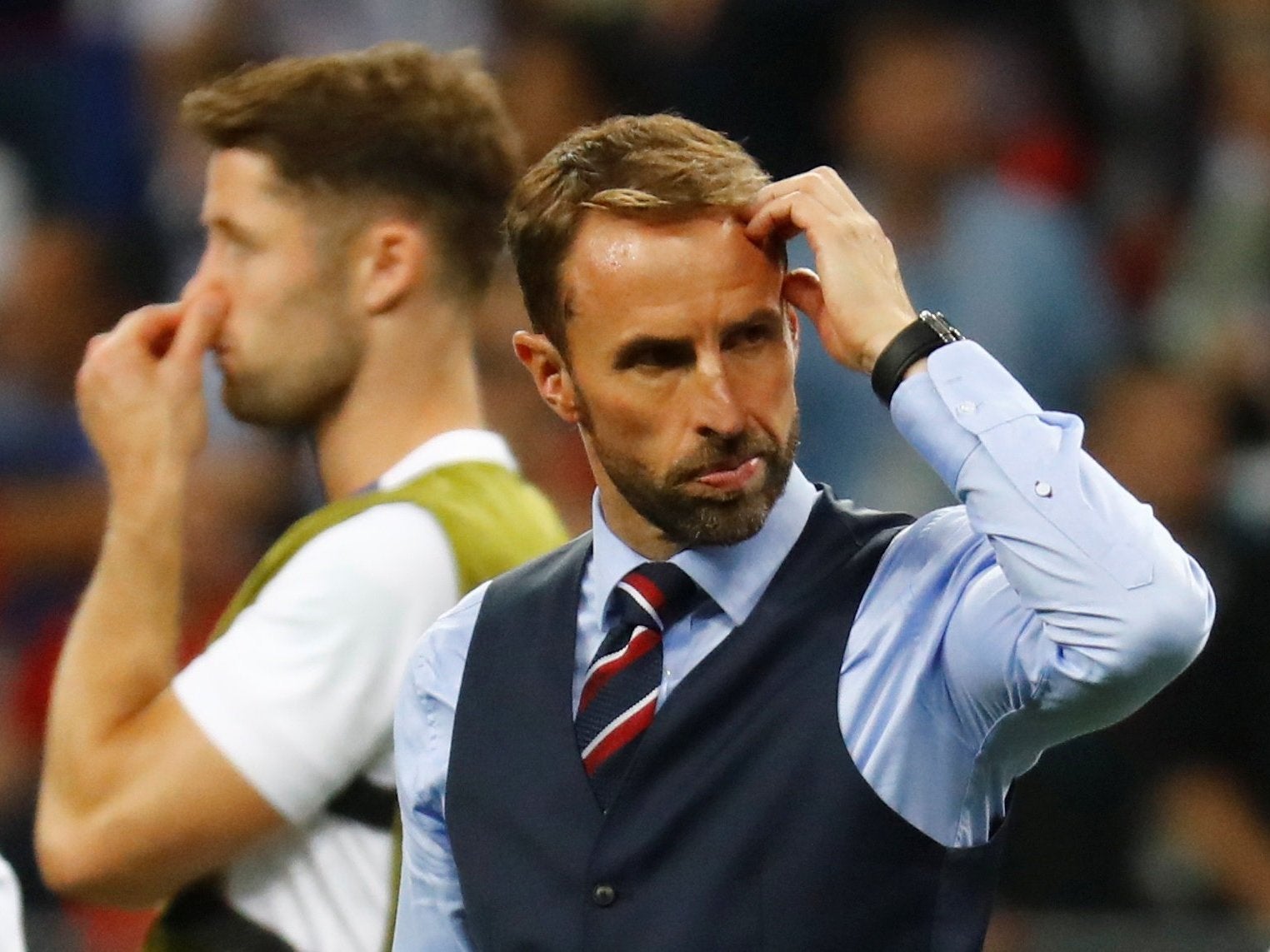World Cup 2018: How Gareth Southgate’s tactical immaturity cost England their shot at the final
As England lost control on the match, Southgate needed to reinforce the midfield - yet his decision to keep two up front ultimately cost his side dear
Your support helps us to tell the story
From reproductive rights to climate change to Big Tech, The Independent is on the ground when the story is developing. Whether it's investigating the financials of Elon Musk's pro-Trump PAC or producing our latest documentary, 'The A Word', which shines a light on the American women fighting for reproductive rights, we know how important it is to parse out the facts from the messaging.
At such a critical moment in US history, we need reporters on the ground. Your donation allows us to keep sending journalists to speak to both sides of the story.
The Independent is trusted by Americans across the entire political spectrum. And unlike many other quality news outlets, we choose not to lock Americans out of our reporting and analysis with paywalls. We believe quality journalism should be available to everyone, paid for by those who can afford it.
Your support makes all the difference.For all the celebration of this new-look England side, Wednesday night’s 2-1 semi-final defeat by Croatia was characterised by an old failing: a refusal to adjust tactics to nullify the strength of the opposition and, more specifically, an insistence upon leaving two men upfront while being overrun in midfield. England started excellently, but their tactical inflexibility cost them a place in Sunday’s final.
Gareth Southgate’s highly unusual 3-3-2-2 formation is essentially defined by two major features, which both contributed to England’s impressive first half performance.
The first is the presence of both Dele Alli and Jesse Lingard, natural number 10s fielded in conventional midfield roles and allowed to attack simultaneously and swap passes between the lines. On three occasions in the first half, Alli and Lingard combined dangerously in behind the Croatia midfield. The first example came inside three minutes, when Lingard found Alli, he was bundled over by Luka Modric, and Kieran Trippier expertly curled home the free-kick.

The second occasion came after half an hour, when Alli found Lingard, who poked the ball through to Harry Kane, who might have squared to Raheem Sterling, but instead had two attempts on goal, the second hitting the post. The assistant referee eventually wrongly flagged for offside, but a VAR check would have seen the goal awarded, and this was England’s best opportunity to put the game to bed. The third occasion, meanwhile, came five minutes later, when a square pass from Alli found Lingard in space on the edge of the box. Lingard took his time, picked his spot – and curled the ball well wide.
The other defining feature of England’s attack is their sheer speed, and after Trippier’s early opener meant Croatia pushed forward, England’s attackers were afforded space to break into. The chief threat was Sterling, starting deeper than Kane but always running in behind, and he terrified the immobile centre-back pairing of Dejan Lovren, who resorted to cynical fouls, and Domagoj Vida, who never seemed comfortable on the turn. Sterling sped past Vida dangerously after six minutes, forced both Vida and Sime Vrsaljko into crucial ‘last man’ interventions within the next 10 minutes, threatened to bundle his way towards goal shortly afterwards, and beat Lovren to a ball into the right-back zone despite giving the Liverpool centre-back a ten-yard head-start. He was consistently England’s most dangerous player, with Kane rarely sprinting in behind, and increasingly resorting to hopeful balls for others, seemingly unable to keep pace with attacks.
Croatia didn’t react well to their early concession. For a side blessed with ball-playing midfielders of the calibre of Modric and Ivan Raktitic, their first half performance was surprisingly frantic, as if Zlatko Dalic’s side believed they had five minutes, rather than 85 minutes, to find an equaliser. They were hurried and sloppy with their distribution, and improved after the break when they became more stereotypically themselves: calming the tempo, holding onto the ball for longer periods and – most crucially – working the ball from flank to flank.
The clear weakness of England’s system is the lack of numbers down the wings, which meant Croatia’s full-back duo of Vrsaljko and Ivan Strinic were unmarked. With England’s wing-backs pinned back by Ante Rebic and Ivan Perisic, England’s three central midfielders were tasked with sliding across the pitch laterally to shut down Croatia’s full-backs, while also having a responsibility to watch Modric and Rakitic.

This proved too much, and quick diagonal balls out wide, most frequently from Rakitic to Vrsaljko, caused England serious problems. This shouldn’t have come as a surprise: Vrsaljko’s overlapping combined with Modric’s invention was Croatia’s greatest source of creativity in their quarter-final against Russia, and while Vrsaljko had been considered an injury doubt, England should have had a plan to reformat the side and shut him down.
The closest man to Vrsaljko was usually Alli, whose primary responsibility was Modric, and gradually he became overrun. Croatia’s equaliser felt predictable: Rakitic spread the play to Vrsaljko, in oceans of space, and he had time to steady himself and cross for Perisic, who finished in impressively acrobatic fashion.
England desperately needed a left-sided player to track, or pin back, Vrsaljko: Sterling could have played that role, as could his replacement Marcus Rashford. Instead England continued to play two upfront. A complete formation change wasn’t necessary: England could have happily allowed the less threatening Strinic time on the ball, just as France had played a lopsided system and happily invited passes to Belgium’s Nacer Chadli the previous evening. But playing with two upfront and leaving a dangerous Croatian player unmarked cost England defensively, and offered very little going forward.
In truth, neither manager attempted to influence the course of the game with tactical changes, at least until Mario Mandzukic’s winner in the second half of extra-time. Only one substitute, Rashford, was summoned before the end of 90 minutes. Then, it was about replacing tired legs, Dalic shutting down the game after going 2-1 up, and England throwing on Jamie Vardy, a speed merchant, when Croatia were defending deep for the first time.

This has unquestionably been a positive tournament for England, and Southgate deserves enormous credit for rejuvenating the side, embracing a positive style of football and galvanising the entire country. But this must also be considered an enormous missed opportunity and a hugely frustrating defeat, characterised not by technical failings, physical weakness or psychological troubles, but by tactical immaturity. Croatia did nothing to change their system as the game continued, and yet England were still outmanoeuvred.

Join our commenting forum
Join thought-provoking conversations, follow other Independent readers and see their replies
Comments